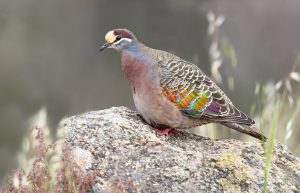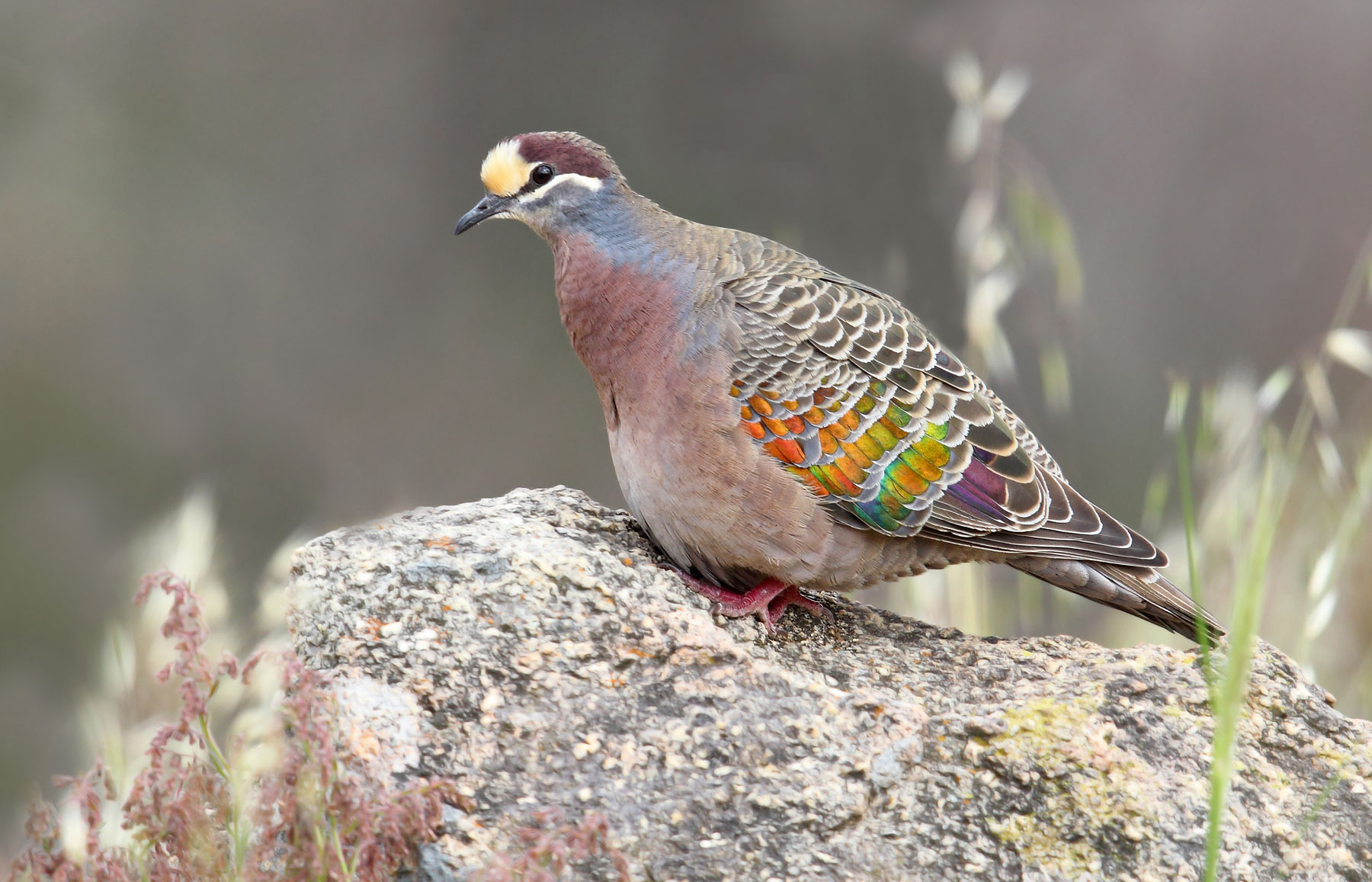By Ian Davidson and Chris Tzaros – Wangaratta Landcare & Sustainability
The Common Bronzewing is a shy native pigeon that rarely allows the observer a close approach. If startled, they fly away with a clatter, keeping low to the ground while moving in a steady, direct manner. Their common call is a deep “oom”, repeated several times.
Common Bronzewings are medium-sized, heavily built pigeons. The male has a yellow-white forehead and pink breast. Both sexes have a clear white line below and around the eye and patches of green, blue and red in the wing, characteristic of all Bronzewings. Young Common Bronzewings are duller and browner than the adults. The metallic wing patch shown beautifully in the adjoining photo and after which the bird is named, may be absent or not easily seen.
The Common Bronzewing feeds on seeds, especially old wattle pods and other vegetable matter. The birds feed on the ground and in small parties and need to drink frequently, and visit waterholes during either the day or night. The need to drink frequently is because of their mostly grain-rich diet.
Common Bronzewings build an untidy nest of sticks and twigs. The nest is normally placed low down in a tree or bush, but may be up to 20 m above the ground. The creamy-white eggs are incubated by both parents. Both adults also share the care of the young birds, which are born naked and helpless and are completely dependent on their parents. Bronzewings, like other pigeons, secrete a special milk-like substance from their crop, which is fed to the young chicks.
Locally, Common Bronzewings are normally seen alone, in pairs or in small flocks in or near native vegetation with a good wattle shrub layer, and are rarely found far from water. One of the best places to observe Common Bronzewings is near any of the dams/waterholes scattered throughout our public land bushland including the Warby Ranges, Killawarra and Chiltern. Sitting quietly at dusk nearby can be very rewarding, with these beautiful birds likely to be present.

Photo: Common Bronzewing male showing its magnificent metallic bronze colouring, by Chris Tzaros (Birds Bush and Beyond).

